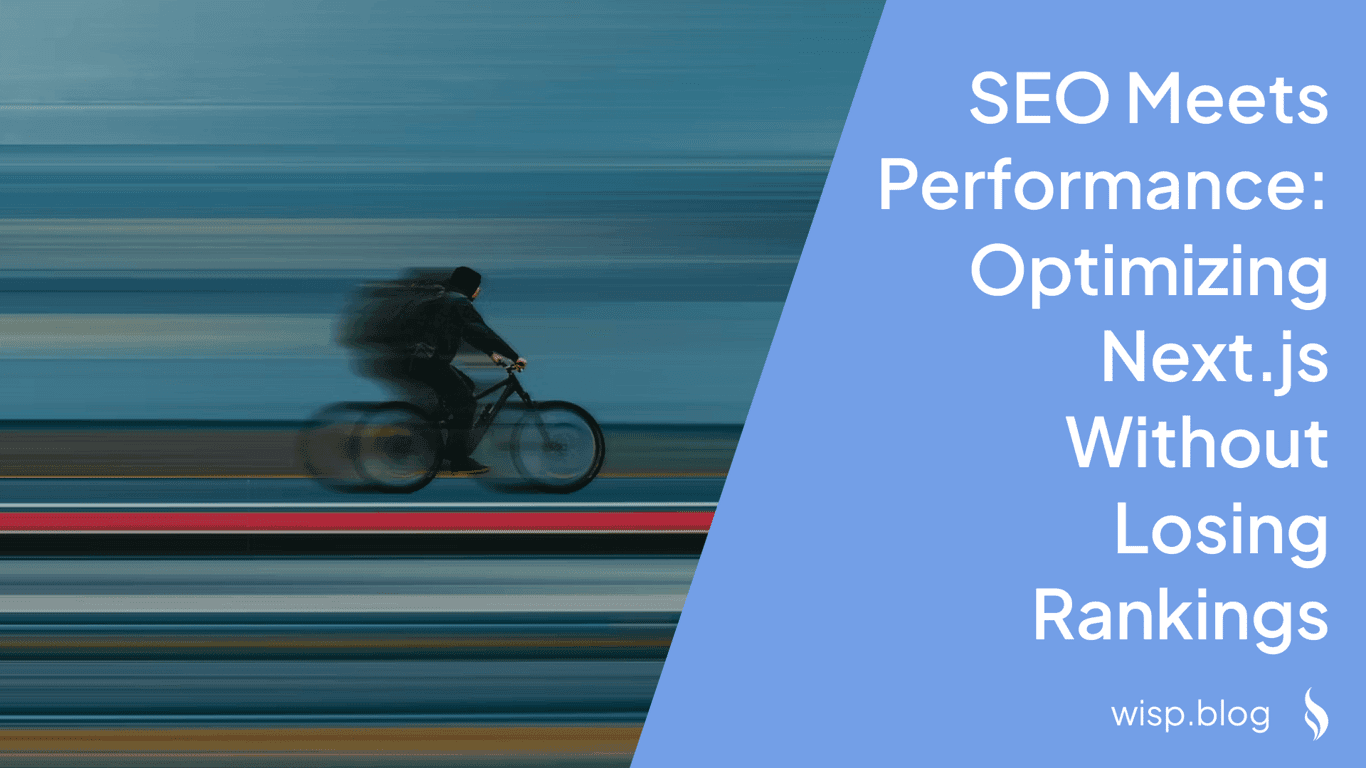 In the complex landscape of modern web development, the decision between Server-Side Rendering (SSR) and Client-Side Rendering (CSR) can significantly impact your application's performance, user experience, and SEO. This decision becomes even more critical when working with frameworks like Next.js and React, where both options are readily available. Many developers struggle with understanding when to use each approach, often falling prey to misconceptions that lead to suboptimal implementation choices.
In the complex landscape of modern web development, the decision between Server-Side Rendering (SSR) and Client-Side Rendering (CSR) can significantly impact your application's performance, user experience, and SEO. This decision becomes even more critical when working with frameworks like Next.js and React, where both options are readily available. Many developers struggle with understanding when to use each approach, often falling prey to misconceptions that lead to suboptimal implementation choices.
Understanding the Fundamentals
Before diving into implementation details, let's clarify what these rendering methods actually entail:
Server-Side Rendering (SSR) is a technique where the server prepares a fully rendered HTML page before sending it to the client's browser. The browser receives the complete content, which is immediately visible to users without waiting for JavaScript to execute.
Client-Side Rendering (CSR) involves sending a minimal HTML document to the browser, where JavaScript takes over to build the interface dynamically. The initial page is essentially a shell, with content being generated as JavaScript executes in the user's browser.
Key Differences Between SSR and CSR
The distinction between these approaches becomes clearer when examining several critical factors:
Initial Load Experience
SSR: Users see content almost immediately since the server delivers a pre-rendered HTML page. This eliminates the "blank page" problem common in client-rendered applications.
CSR: Users typically experience a delay as they must wait for JavaScript to download, parse, and execute before seeing meaningful content. This often manifests as a blank screen or loading spinner.
SEO Considerations
SSR: Search engines receive fully rendered content, making it easier to index your pages effectively. This is particularly beneficial for content-focused websites where discoverability is crucial.
CSR: While Google has improved its ability to render JavaScript, other search engines may struggle with client-rendered content, potentially impacting your site's visibility.
Performance Metrics
SSR: Generally offers better Time to First Byte (TTFB) and First Contentful Paint (FCP) metrics, as content is immediately available when the HTML loads.
CSR: Usually demonstrates faster Time to Interactive (TTI) once the initial loading is complete, as the application is already bootstrapped in the browser.
Server Load
SSR: Places higher demands on your server resources since rendering happens for each request.
CSR: Shifts the rendering workload to the client's device, potentially reducing server costs but increasing the burden on user devices.
Real-World Applications: When to Choose SSR vs. CSR
Based on extensive user research and community feedback, here's guidance on when to select each rendering strategy:
When to Use SSR:
Content-heavy websites: Marketing sites, blogs, and e-commerce product pages benefit tremendously from SSR's improved SEO capabilities and faster initial load times.
As one developer notes: "SSR is a better choice for marketing sites where first paint speed is important." (Source)
Public-facing pages: Any page that needs to be discoverable through search engines should leverage SSR to ensure proper indexing.
Initial page loads: For sites with mixed content types, using SSR for the initial page load provides a faster perceived performance.
"Use SSR for initial loads for things like feeds and profile pages and then switch to CSR." (Source)
Users with slower devices: SSR reduces the JavaScript processing burden on client devices, benefiting users with less powerful hardware.
When to Use CSR:
Highly interactive applications: Dashboards, admin panels, and other interaction-heavy interfaces benefit from CSR's more fluid user experience after initial load.
"If you want lots of interactivity then you use CSR." (Source)
Authentication-protected content: For content behind login screens, SSR's SEO benefits are largely irrelevant.
"Dashboards etc. don't really have much benefit from SSR since they are usually behind authentication anyway. Users don't make cold navigation to /dashboard, that would most likely be a redirect to login anyway." (Source)
Real-time data applications: Applications requiring frequent updates benefit from CSR's ability to efficiently update the DOM without full page reloads.
"If you are displaying real time data then CSR is the way to go. Serve the site through s3 or storage blob through a CDN." (Source)
Applications with preloading opportunities: When users must navigate through multiple pages before reaching the main application, preloading can mitigate CSR's initial load disadvantages.
"Since they load the front page first anyway there's plenty of time to preload the js files in background so once they get in the app should be already ready. And if they used it previously the files will be cached already." (Source)
Common Misconceptions
Several misconceptions persist in the developer community regarding SSR and CSR:
"SSR is always better for performance": While SSR improves initial load metrics, it can actually lead to worse overall performance if not implemented carefully, especially on resource-constrained servers.
"The assumption is often that a server does have more resources available, but in today's world, plenty of sites run on cheap 1GB machines." (Source)
"SSR is only for SEO": While SEO is a major benefit, SSR also improves perceived performance and user experience, particularly for content-focused sites.
"SSR makes everything slower": This concern stems from implementation issues rather than inherent problems with SSR itself.
"I don't want to make the website slower by attempting to overly optimize it." (Source)
"Modern frameworks make the choice irrelevant": While Next.js and similar frameworks make implementation easier, understanding the underlying principles remains crucial for optimal performance.
"There's clearly some overemphasis on SSR these days. A lot of it is hype and misunderstandings for newer developers." (Source)
Implementation in Next.js
Next.js has made implementing both SSR and CSR remarkably straightforward through its component-based architecture and built-in data fetching methods.
Server-Side Rendering with Next.js
Here's a simple example of SSR implementation in Next.js:
// pages/ssr-example.js
export default function ProductPage({ product }) {
return (
<div>
<h1>{product.name}</h1>
<p>{product.description}</p>
<span>${product.price}</span>
</div>
);
}
// This function runs on the server for every request
export async function getServerSideProps() {
// Fetch data from an API
const res = await fetch('https://api.example.com/products/1');
const product = await res.json();
// Pass data to the page via props
return { props: { product } };
}
In this example, getServerSideProps fetches data on the server for each request, ensuring fresh content is always delivered.
Client-Side Rendering with Next.js
For client-side rendering in Next.js, you can use React's hooks:
// pages/csr-example.js
import { useState, useEffect } from 'react';
export default function DashboardPage() {
const [data, setData] = useState(null);
const [isLoading, setIsLoading] = useState(true);
useEffect(() => {
async function fetchData() {
const res = await fetch('/api/dashboard-data');
const result = await res.json();
setData(result);
setIsLoading(false);
}
fetchData();
}, []);
if (isLoading) return <div>Loading dashboard data...</div>;
return (
<div>
<h1>Dashboard</h1>
{/* Render dashboard with data */}
{data.metrics.map(metric => (
<div key={metric.id}>
<h2>{metric.name}</h2>
<p>{metric.value}</p>
</div>
))}
</div>
);
}
This approach defers data fetching to the client, making it suitable for personalized or frequently changing data.
Best Practices for Hybrid Approaches
The most effective applications often combine both rendering methods:
1. Strategic SSR for Key Pages
Use SSR for landing pages, product listings, and other content that needs SEO visibility and fast initial loads. This approach ensures that critical user paths benefit from immediate content visibility.
2. Client Components for Interactive Elements
Even on server-rendered pages, isolate interactive elements as client components to maintain a responsive feel:
'use client';
// components/InteractiveWidget.js
import { useState } from 'react';
export default function InteractiveWidget() {
const [count, setCount] = useState(0);
return (
<div>
<p>You clicked {count} times</p>
<button onClick={() => setCount(count + 1)}>
Click me
</button>
</div>
);
}
3. Utilize Cache Revalidation
Next.js offers powerful caching capabilities that can deliver SSR performance with reduced server load:
// pages/cached-ssr.js
export async function getStaticProps() {
const res = await fetch('https://api.example.com/content');
const data = await res.json();
return {
props: { data },
// Revalidate every 10 minutes
revalidate: 600,
};
}
This Incremental Static Regeneration (ISR) approach provides the SEO benefits of SSR while significantly reducing server load.
4. Implement Suspense Fallbacks
Use React Suspense to provide better loading experiences:
import { Suspense } from 'react';
import DynamicComponent from './DynamicComponent';
export default function Page() {
return (
<div>
<h1>My Application</h1>
<Suspense fallback={<div>Loading...</div>}>
<DynamicComponent />
</Suspense>
</div>
);
}
Conclusion
The choice between SSR and CSR isn't binary—it's contextual. Understanding the strengths and limitations of each approach allows developers to make informed decisions based on their specific requirements rather than following trends blindly.
For content-focused sites where SEO and initial load speed are crucial, SSR provides clear advantages. For highly interactive applications, particularly those behind authentication, CSR often delivers a superior user experience. And for many applications, a hybrid approach that leverages the strengths of both methods will yield the best results.
As one developer wisely noted: "Use SSR whenever possible and CSR when you need user interaction." This balanced perspective recognizes that these technologies are complementary tools in the modern web developer's arsenal rather than competing approaches.
By focusing on the actual needs of your users and the specific requirements of your application, you can avoid the pitfalls of "overemphasis on SSR" that stems from "hype and misunderstandings" and instead build truly optimized web experiences.
For further exploration of these concepts, consider reading these excellent resources:



